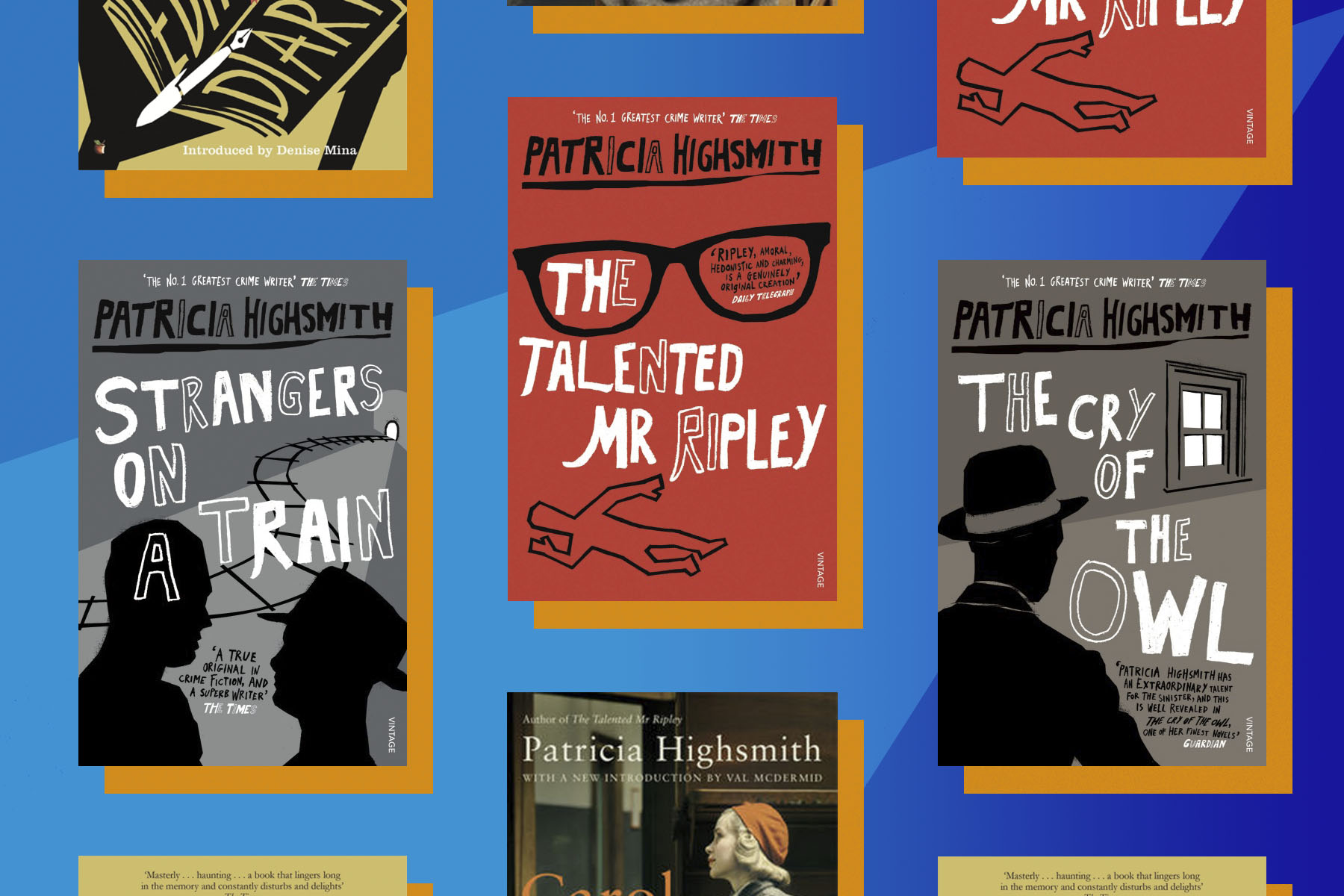- Home |
- Search Results |
- Where to start with Patricia Highsmith

Patricia Highsmith, born on 19 January 1921 in Fort Worth, Texas, was one of the most successful psychological thriller writers of the 20th century, whose work continues to be discovered and adapted for film, stage and television today.
Her first novel, Strangers on a Train, published in 1950 when Highsmith was 29, was promptly made into an electrifying film noir by none other than master of suspense Alfred Hitchcock. Along with her best-known series of novels, about the amoral confidence trickster and criminal Tom Ripley, the book epitomises Highsmith’s obsession with the darker, crueller side of human nature, as well as with sexual ambiguity and its suppression, alongside the power of personal seduction. Much of what she wrote reflected facets of Highsmith’s own personality. She took both men and women as lovers, and was intensely private and a paradox to many who knew her.
The only child of two commercial artists whose parents divorced 10 days before her birth, Highsmith grew up in New York. After graduating from college in the early 1940s she worked as a sales assistant in a New York City department store (the inspiration for her long-suppressed novel Carol, about a lesbian love affair) and also as a writer of plot outlines for comic books.
She travelled in Mexico and America’s south west before setting permanently in Europe – as restless in nature as many of her fictional character – first Suffolk from 1963, and finally Switzerland from 1982, where she died aged 74 in February 1995.
From the outset she raised the bar of the popular crime novel from its pulp fiction origins to bleak, dazzling studies of human psychology worthy of anything by Dickens or Dostoevsky. Graham Greene famously called her “the poet of apprehension”.
Carol (1990) (first published as The Price of Salt by Clare Morgan, 1952)
Highsmith was working at a temporary job in Bloomingdale’s department store in New York in December 1948 when she was stopped in her tracks by an encounter with a glamorous blonde woman wearing a mink coat. The woman bought a doll from Highsmith as a Christmas present for her daughter and the brief exchange left Highsmith feeling, as she later wrote in her diary, “odd and swimmy in the head, yet at the same time uplifted, as if I had seen a vision.”
After her shift had ended she went home and wrote the plot for The Price of Salt, which, given its content – a love affair between two women – and Highmsith’s fears for her burgeoning literary reputation, was published under a pseudonym in 1952. It was only in 1990, a few years before Highsmith died, that this novel – so personal and so different from the deep misanthropy and violence of her other work – would be republished with a new title and under Highsmith’s own name.
The story of the passionate relationship between 19-year-old aspiring theatre designer Therese Belivet, who, like Highsmith at the time, was ambivalently attached to a young man, and wealthy, older, married mother Carol Aird is one of subterfuge and also exaltation. It is a story of forbidden love in early 1950s America, of secret lunches accompanied by strong cocktails in wood-panelled dining rooms, and delirious nights spent in wayside motels; of high fashion and higher aspirations.
When Therese and Carol go on the run from Carol’s husband, who hires a detective to trail them, the story switches form the pursuit of love to that of a game of cat and mouse.
Edith’s Diary (1977)
Feted on publication as “a relentless dissection of an unexceptional life that burns itself out from a lack of love and happiness” Edith’s Diary marked yet another departure for Highsmith. The author called it “more like a novel than a thriller” in which she used her main character to amplify the emptiness of much of modern life.
A lonely middle-aged housewife, Edith Howland retreats to her diary to fill the pages with the world of her imagination, in contrast to the harsh realities of personal and political events that mark the passing years. Her problematic and sadistic son grows up to be an alcoholic, her husband leaves her for a younger woman, and yet the pages of Edith’s diary are filled with substance and satisfaction of a life well lived, of loving grandchildren, success and friendship. Increasingly paranoid, and acutely aware of the world’s injustices and the hollowness of modern America, Edith, downtrodden but defiant, resists, in a final twist, being committed to a psychiatric institution.
What did you think of this article? Let us know at editor@penguinrandomhouse.co.uk.